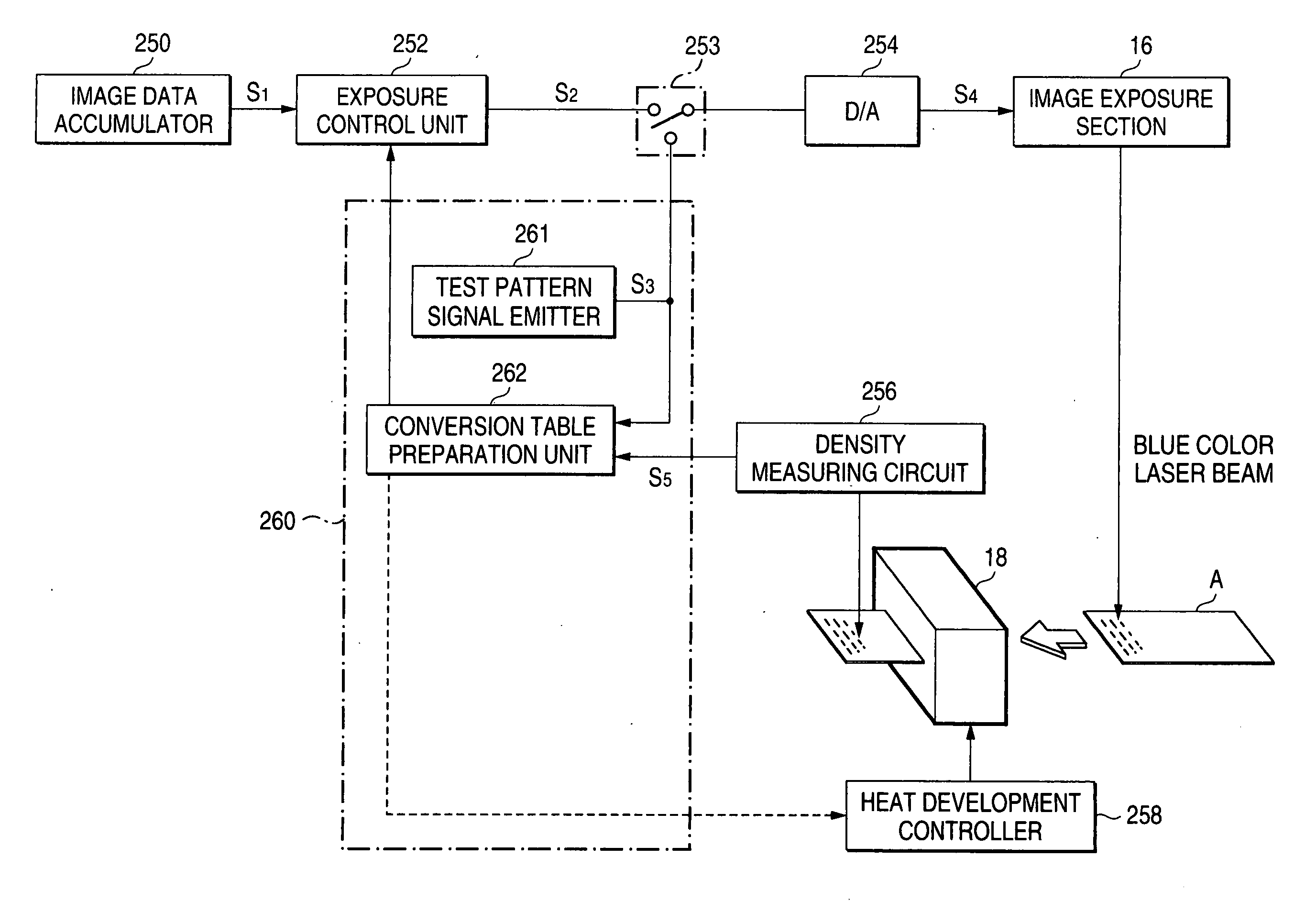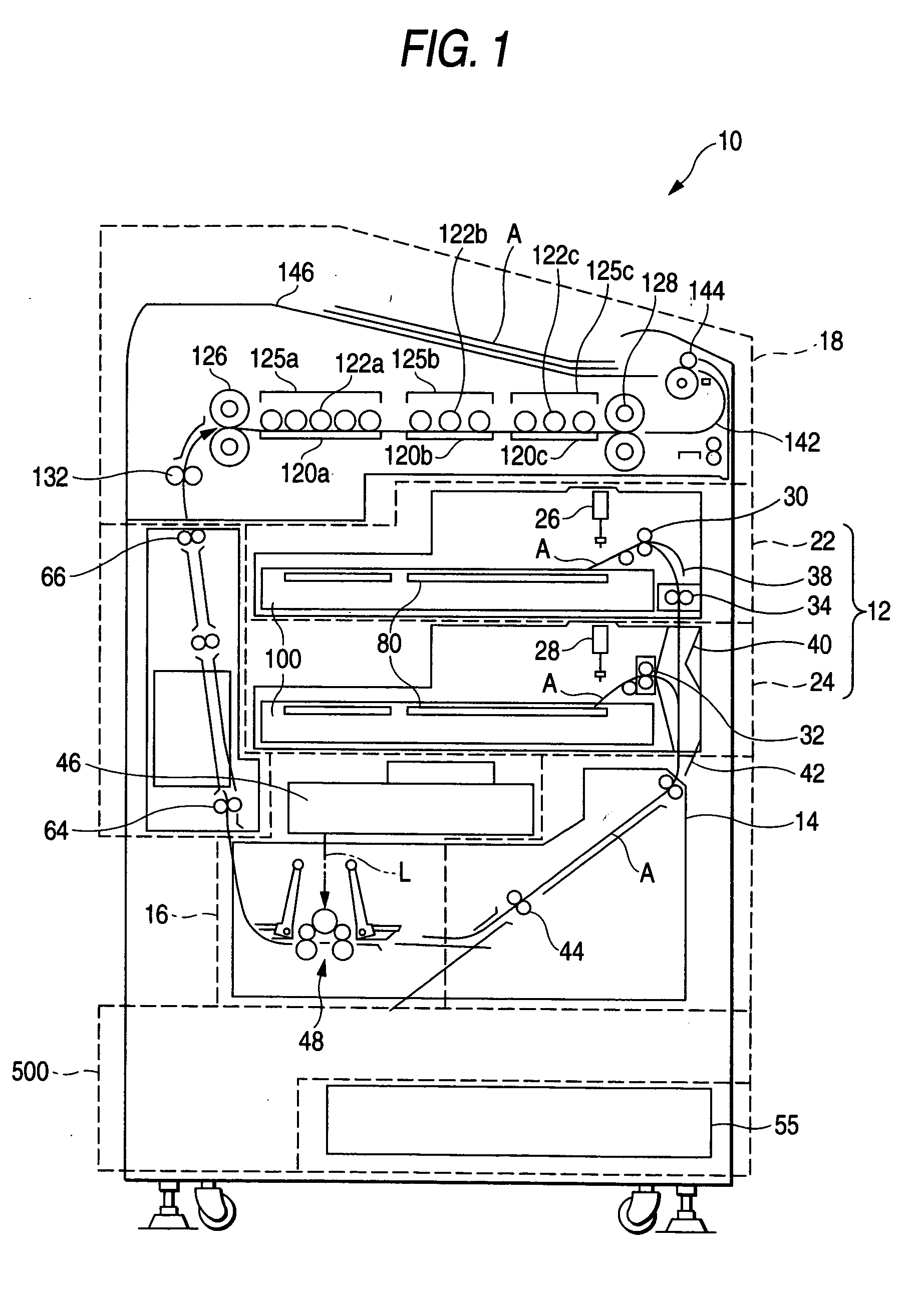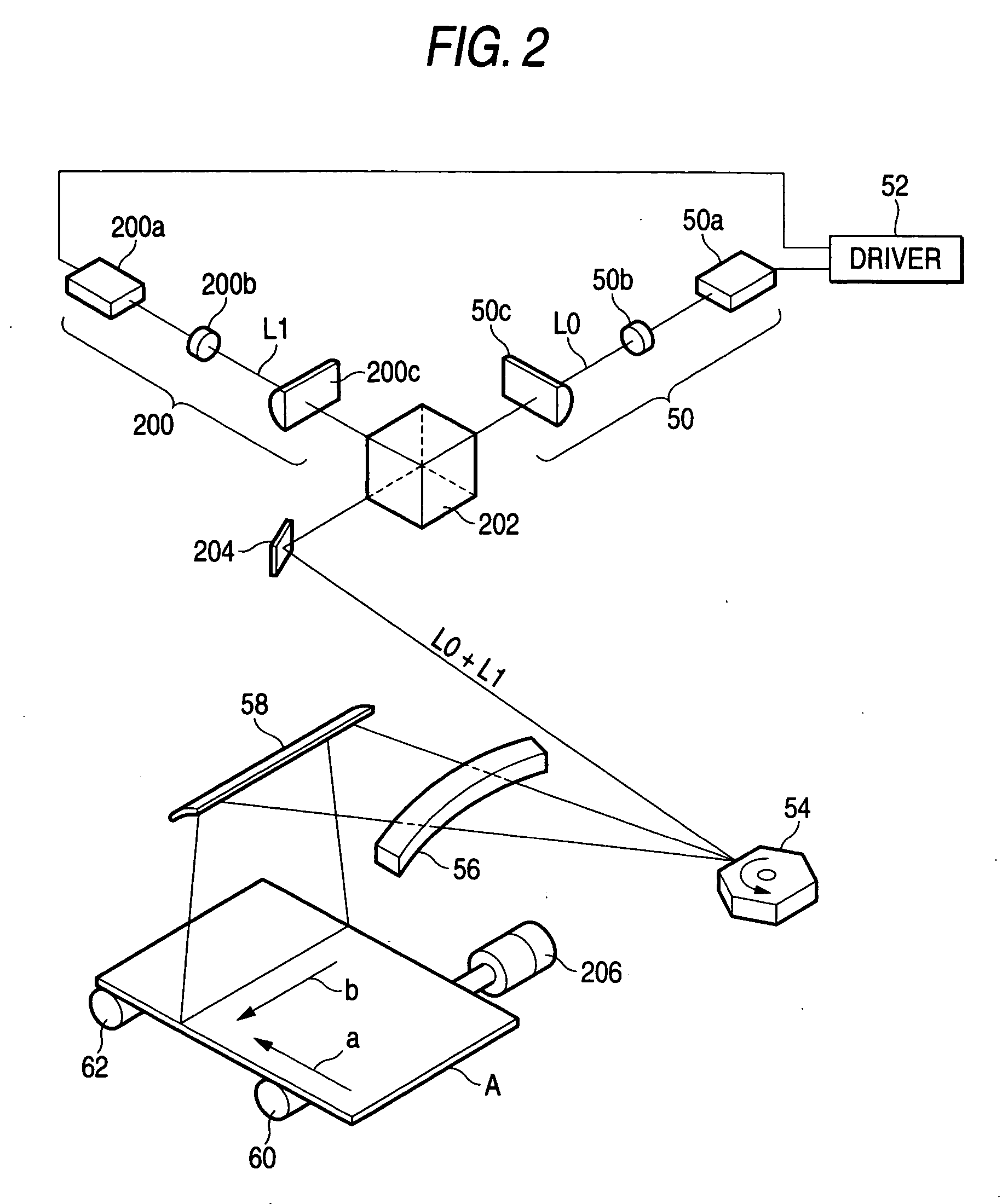Image formation on heat-developable light-sensitive material and image forming apparatus
a technology of light-sensitive materials and image formation, which is applied in the direction of photosensitive materials, instruments, printers, etc., can solve the problems of failure to design a sufficiently sensitive system, desensitization of spectrally sensitive heat-developable light-sensitive materials during storage, etc., and achieves high sensitivity, high quality, and high density
- Summary
- Abstract
- Description
- Claims
- Application Information
AI Technical Summary
Benefits of technology
Problems solved by technology
Method used
Image
Examples
example 1
1) Preparation of PETP Support
Polyethylene terephthalate (PETP) having an intrinsic viscosity IV of 0.66 (measured in phenol / tetrachloroethane=6 / 4 at 25° C.) was prepared from terephthalic acid and ethylene glycol in a conventional manner. PETP was pelletized, dried at 130° C. for 4 hours, melted at 300° C., and mixed with 0.04% of dye BB shown below. The molten mixture was extruded through a T-die and quenched to obtain an unstretched film which would have a thickness of 175 μm after biaxial stretch and heat set.
The film was stretched 3.3 times in the machine direction by means of rolls having different peripheral speeds and then 4.5 times in the transverse direction with a tenter at 110° C. and 130° C., respectively. The biaxially stretched film was heat set at 240° C. for 20 seconds, followed by relaxation at the same temperature in the transverse direction. Both lateral edges were trimmed and knurled, and the film was wound under tension of 4 kg / cm2 into a roll.
2) Corona...
example 2
Silver halide emulsions-2, -3, and -6 having the uniform halogen composition shown in Table 1 were prepared in the same manner as for emulsion-1 of Example 1 except for changing the halogen composition. Light-sensitive materials were prepared by using these emulsions in the same manner as in Example 1 (designated samples 2, 3, and 6). The temperature condition in silver halide grain formation was controlled so that the resulting silver halide emulsion grains might have an average sphere-equivalent diameter of 40 nm.
example 3
1) Preparation of Silver Halide Emulsion-4 and Sample 4 To 1421 ml of distilled water was added 3.1 ml of a 1% potassium bromide solution, and 3.5 ml of 0.5 mol / l sulfuric acid and 31.7 g of phthalated gelatin were added to the solution. While stirring the mixture in a stainless steel reaction vessel at a liquid temperature of 32° C., solution A prepared by diluting 22.22 g of silver nitrate with distilled water to make 95.4 ml and solution B prepared by diluting 15.6 g of potassium bromide with distilled water to make 97.4 ml were added to the mixture at a constant rate over 45 seconds.
To the mixture were added 10 ml of a 3.5% hydrogen peroxide aqueous solution and then 10.8 ml of a 10% benzimidazole aqueous solution. Solution C prepared by diluting 30.64 g of silver nitrate with distilled water to make 187.6 ml was added to the mixture at a constant rate over 12 minutes. Simultaneously with this addition, solution D prepared by diluting 21.5 g of potassium bromide with distille...
PUM
 Login to View More
Login to View More Abstract
Description
Claims
Application Information
 Login to View More
Login to View More - R&D
- Intellectual Property
- Life Sciences
- Materials
- Tech Scout
- Unparalleled Data Quality
- Higher Quality Content
- 60% Fewer Hallucinations
Browse by: Latest US Patents, China's latest patents, Technical Efficacy Thesaurus, Application Domain, Technology Topic, Popular Technical Reports.
© 2025 PatSnap. All rights reserved.Legal|Privacy policy|Modern Slavery Act Transparency Statement|Sitemap|About US| Contact US: help@patsnap.com



